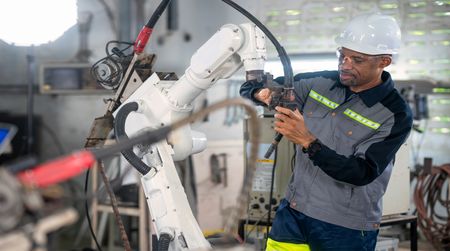Front End Engineering Design (FEED) vs Detailed Engineering Design
- June 30, 2021
- Posted by: Velosi Author
- Categories: Engineering, Insights

What is Front End Engineering and Design?
FEED (Front End Engineering Design) means Basic Engineering which is conducted after completion of Conceptual Design or Feasibility Study. At this stage, before start of EPC (Engineering, Procurement and Construction), various studies take place to figure out technical issues and estimate rough investment cost. The product of the activity is called “FEED Package” The front-end design engineering phase produces several essential engineering documents that serve as the starting point for the detailed engineering design phase.
The term “conceptual design” implies just that – an idea. You have an idea and want to develop it further and it is used to fully manage a project such as its planning and costs before submitting a bid.
Despite this, comparative studies show that FEED accounts for about 2% of total project expenditures, and well-performed FEED projects may save up to 30% on design and execution expenses.
A well-crafted FEED package considers all the client’s project-specific needs to avoid major modifications during the execution phase. Let’s dive into the specifics to understand the purpose and importance of FEED and detailed engineering design.
The purpose of Front End Engineering Design
Front End Engineering Design is primarily concerned with:
- To establishes technical, project-specific requirements to ensure that the project’s scope is implicit.
- It develops the project’s strategy and the system’s design foundation.
- It provides the cost estimate for the project to get budget approval.
- It contributes to the risk mitigation of the project.
- To forecast the length and timeline of the project during the detailed design phase.
Importance of FEED
FEED is essential to creating effective project results. FEED deliverables include clear project scope, a detailed work budget, a total cost of ownership evaluation, timelines, goals, risk assessments, and, perhaps most notably, stakeholder buy-in.
Each one of these deliverables works in concert to assist in highlighting and mitigating risk and uncertainty across the design and commissioning stages, thus delivering long-term value throughout the operation/asset life cycle.
What is detailed engineering?
Detailed engineering follows Front End Engineering Design (FEED) and Basic Engineering, it contains in detail diagrams and drawings for construction, civil works, instrumentation, control system, electrical facilities, management of suppliers, schedule of activities, costs, procurement of equipment, economic evaluation and also environmental impacts before starting of construction of a project.
If we look into detailed engineering, it is a process that encompasses conceptual design, FEED design, and design specifications and when executed well, it leads to a well-designed solution.
Conceptual design – the first phase of detailed engineering, during which the primary output is drawings.
FEED Design – this step takes the idea and transforms it into a practical system that may be expanded further.
Detailed Design – this is the last step of the process, during which the design is improved and plans, specifications, and estimates are produced. Detailed engineering produces outputs such as two-dimensional and three-dimensional models.
Furthermore, each component, subsystem, and item important to the project is managed appropriately; purchased, and executed through detailed engineering. Each aspect of the project, including end-user satisfaction and functionality, is addressed in a detailed design.
One thing is certain: detailed engineering is critical to the success of any project.
The project’s detailed engineering stage includes the following responsibilities:
- Confirm, validate, and, if required, change the assumptions and design solutions.
- Provide the product owner with all technical, economic, and legal information.
- Prepare technical specifications, construction specifics, and the circumstances under which the project will be produced or developed.
What stages of detailed engineering are there?
This part breaks down the detailed engineering stages. Below are the steps;
- Examine the specifications
Assuming that the details are compatible with the project’s schedule and circumstances is the first stage of the detailed engineering design.It is unavoidable that conditions change over time, which is why this step is critical. Through data validation, a detailed design may resolve the discrepancies.Calculation and design are important components of detailed engineering. This is the phase at which subsystems are specified, modeled, and carefully validated. - Define and calculate parts
A designer’s primary responsibility is to define components and to calculate appropriate assumptions for the project. Besides, this is the stage at which dimensions and models are created. In addition, the designers should be concerned with the drawings, schematics, schemes, and other aspects of each component in the subsystem. - Assembling and checking parts
At this stage, sub-systems are created, and the project’s components are separated and ordered in detail. However, it is at this stage that the details of the assembly of the components are completed. Furthermore, any outstanding estimates for any element that have not been completed previously are completed at this stage. - Examine the measurements and standards.
After attentively designing, modeling, and drawing the findings, the following stage is to check them and confirm that legal requirements such as laws and safety standards are achieved.This phase is necessary to ensure that the design is compliant with applicable rules. - Preparation, review of documents
Given that detailed engineering design is the last step before construction, it is only necessary that all documentation must be validated and corrected before moving on to the next stage of the project.
Conclusion
All in all, the Front End Engineering Design (FEED) process entails creating a systematic strategy to maximize the value of project results. A well-managed FEED process will uncover value by generating ideas that will be developed and assessed to improve the project’s overall deliverables for both immediate and long-term strategic objectives. Moreover, detailed engineering design is critical and essential. By carefully designing each component of the design, the end-user may receive the security and satisfaction that a well-designed engineering project should provide.




